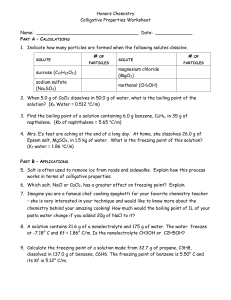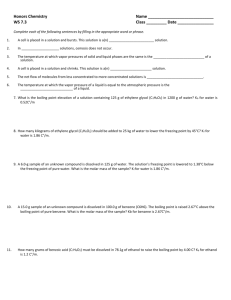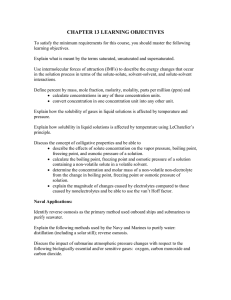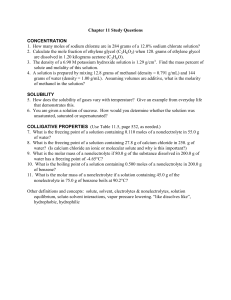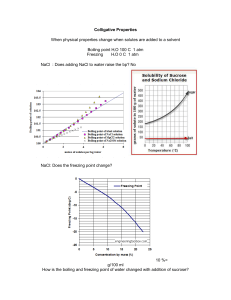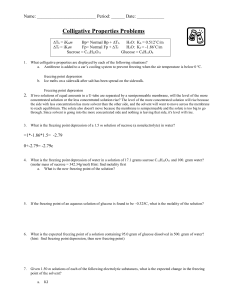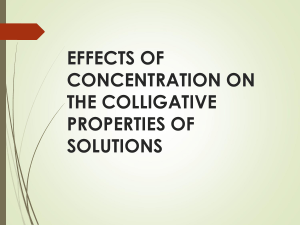Colligative Properties Worksheet - Chemistry
advertisement
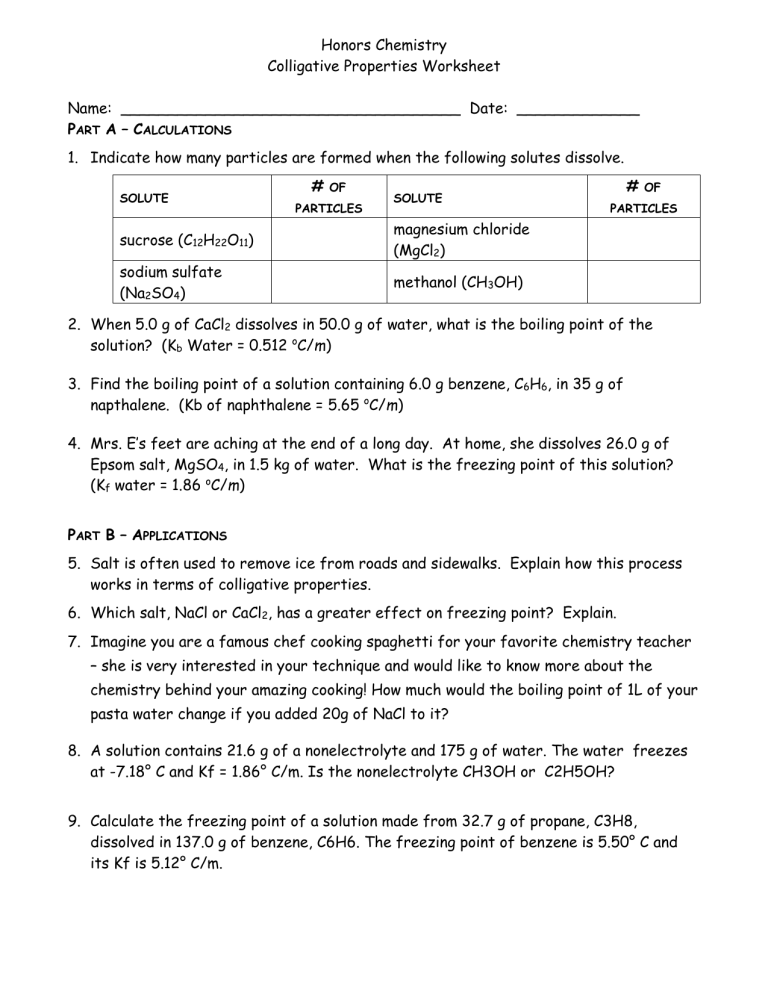
Honors Chemistry Colligative Properties Worksheet Name: ____________________________________ Date: _____________ PART A – CALCULATIONS 1. Indicate how many particles are formed when the following solutes dissolve. SOLUTE # OF PARTICLES SOLUTE sucrose (C12H22O11) magnesium chloride (MgCl2) sodium sulfate (Na2SO4) methanol (CH3OH) # OF PARTICLES 2. When 5.0 g of CaCl2 dissolves in 50.0 g of water, what is the boiling point of the solution? (Kb Water = 0.512 oC/m) 3. Find the boiling point of a solution containing 6.0 g benzene, C6H6, in 35 g of napthalene. (Kb of naphthalene = 5.65 oC/m) 4. Mrs. E’s feet are aching at the end of a long day. At home, she dissolves 26.0 g of Epsom salt, MgSO4, in 1.5 kg of water. What is the freezing point of this solution? (Kf water = 1.86 oC/m) PART B – APPLICATIONS 5. Salt is often used to remove ice from roads and sidewalks. Explain how this process works in terms of colligative properties. 6. Which salt, NaCl or CaCl2, has a greater effect on freezing point? Explain. 7. Imagine you are a famous chef cooking spaghetti for your favorite chemistry teacher – she is very interested in your technique and would like to know more about the chemistry behind your amazing cooking! How much would the boiling point of 1L of your pasta water change if you added 20g of NaCl to it? 8. A solution contains 21.6 g of a nonelectrolyte and 175 g of water. The water freezes at -7.18° C and Kf = 1.86° C/m. Is the nonelectrolyte CH3OH or C2H5OH? 9. Calculate the freezing point of a solution made from 32.7 g of propane, C3H8, dissolved in 137.0 g of benzene, C6H6. The freezing point of benzene is 5.50° C and its Kf is 5.12° C/m.
